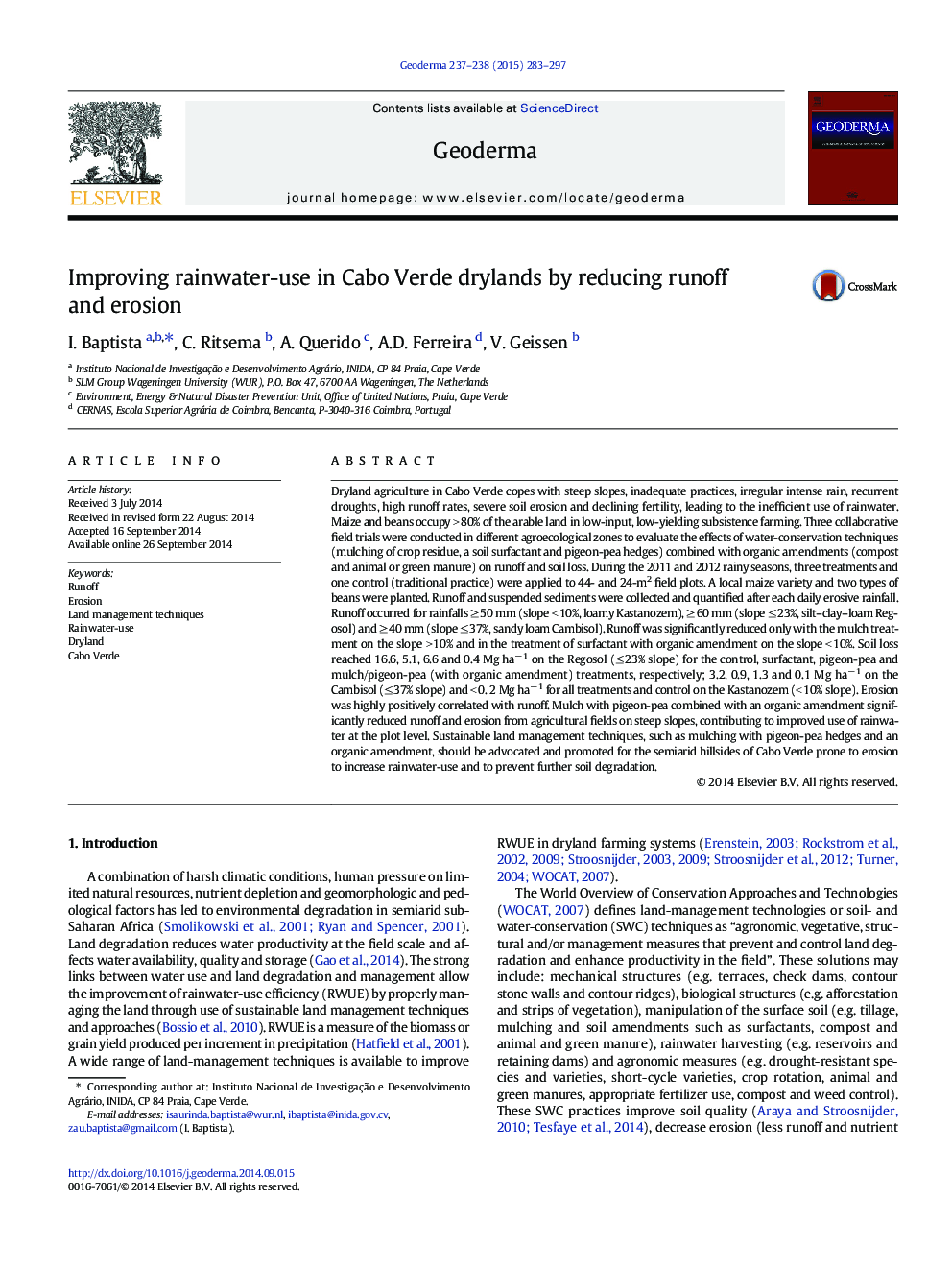| کد مقاله | کد نشریه | سال انتشار | مقاله انگلیسی | نسخه تمام متن |
|---|---|---|---|---|
| 4573292 | 1629467 | 2015 | 15 صفحه PDF | دانلود رایگان |
• Mulch combined with pigeon-pea and organic amendments significantly reduces runoff and erosion on hillsides.
• High effectiveness of combined technique is mostly due to mulch direct soil coverage.
• Pigeon-pea hedges are more effective in reducing erosion after complete plant development than runoff.
• Runoff rates are more strongly influenced by slope and erosion rates by erosive rainfall amount.
• Erosion rates are highly positively correlated with runoff rates.
Dryland agriculture in Cabo Verde copes with steep slopes, inadequate practices, irregular intense rain, recurrent droughts, high runoff rates, severe soil erosion and declining fertility, leading to the inefficient use of rainwater. Maize and beans occupy > 80% of the arable land in low-input, low-yielding subsistence farming. Three collaborative field trials were conducted in different agroecological zones to evaluate the effects of water-conservation techniques (mulching of crop residue, a soil surfactant and pigeon-pea hedges) combined with organic amendments (compost and animal or green manure) on runoff and soil loss. During the 2011 and 2012 rainy seasons, three treatments and one control (traditional practice) were applied to 44- and 24-m2 field plots. A local maize variety and two types of beans were planted. Runoff and suspended sediments were collected and quantified after each daily erosive rainfall. Runoff occurred for rainfalls ≥ 50 mm (slope < 10%, loamy Kastanozem), ≥ 60 mm (slope ≤ 23%, silt–clay–loam Regosol) and ≥ 40 mm (slope ≤ 37%, sandy loam Cambisol). Runoff was significantly reduced only with the mulch treatment on the slope > 10% and in the treatment of surfactant with organic amendment on the slope < 10%. Soil loss reached 16.6, 5.1, 6.6 and 0.4 Mg ha− 1 on the Regosol (≤ 23% slope) for the control, surfactant, pigeon-pea and mulch/pigeon-pea (with organic amendment) treatments, respectively; 3.2, 0.9, 1.3 and 0.1 Mg ha− 1 on the Cambisol (≤ 37% slope) and < 0. 2 Mg ha− 1 for all treatments and control on the Kastanozem (< 10% slope). Erosion was highly positively correlated with runoff. Mulch with pigeon-pea combined with an organic amendment significantly reduced runoff and erosion from agricultural fields on steep slopes, contributing to improved use of rainwater at the plot level. Sustainable land management techniques, such as mulching with pigeon-pea hedges and an organic amendment, should be advocated and promoted for the semiarid hillsides of Cabo Verde prone to erosion to increase rainwater-use and to prevent further soil degradation.
Journal: Geoderma - Volumes 237–238, January 2015, Pages 283–297
